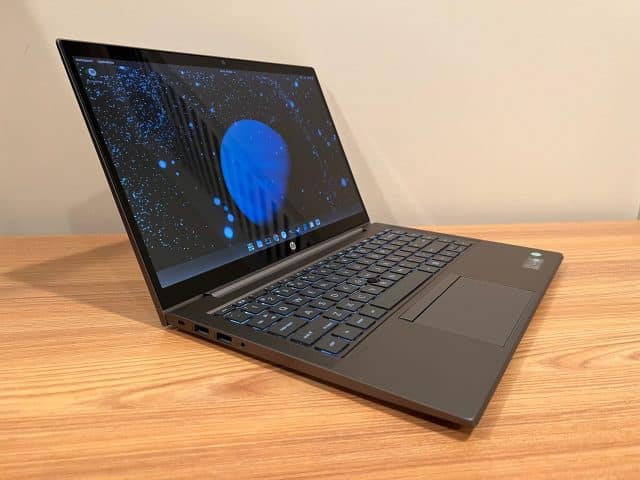Reviews
Review: AlmaLinux OS 9.0
Submitted by Rianne Schestowitz on Monday 27th of June 2022 01:47:14 AM Filed under
Looking back on my experiences with AlmaLinux, there was such a lot of ground covered in under a week and with such varied results. Getting started was a painful experience. The release announcement for AlmaLinux OS 9.0 talks about multiple editions which do not (at the time of writing) exist, cutting off avenues of testing live media and running the distribution on Raspberry Pi computers. The torrent I tried to download was incomplete and there are some key pieces of documentation missing that I had to find upstream. To make matters worse, Anaconda is one of the least friendly graphical installers I have used in recent years with awkwardly placed controls and overly complicated screens.
Once I was up and running, there were several problems on the desktop side of things. GNOME on Wayland is relatively slow and had some problems compared to the GNOME on X11 session, automatic updates are slow and interrupt the flow of using the system. It feels like a functional step backwards to be using a Windows-like update system which is less convenient than virtually any other Linux distribution of the past two decades. To top it off, I couldn't get the Totem player to play videos (despite the software centre claiming I had the proper codecs) and VLC wouldn't play sound, though it works fine on other distributions on the same hardware.
I'm sure some people will write to me to point out AlmaLinux is not primarily intended to be used as a workstation platform, its main duty is as a server distribution. I agree with this idea, but the project claims (inaccurately, it seems) to offer live desktop editions of AlmaLinux and the system installer has multiple workstation and "Server with GUI" roles we can select. Running as a desktop system might not be the distribution's primary role, but it is one which is advertised and encouraged. Running GNOME is even the default role selected by Anaconda, so it would be foolish to overlook how the distribution functions in this, its default role.
- Login or register to post comments
 Printer-friendly version
Printer-friendly version- Read more
- 3209 reads
 PDF version
PDF version
Manjaro Linux Review: Detailed deep-dive with Performance, Hardware Support + More
Submitted by arindam1989 on Saturday 25th of June 2022 07:33:31 PM Filed under

We review the Arch-based Manjaro Linux based on its features, performance, and hardware support and help you to decide on your use case.
- Login or register to post comments
 Printer-friendly version
Printer-friendly version- Read more
- 3976 reads
 PDF version
PDF version
First Look at EndeavourOS ARM on the Raspberry Pi 4
Submitted by Marius Nestor on Saturday 25th of June 2022 03:00:33 AM Filed under


The EndeavourOS team started working on their ARM port for the distribution about two years ago. Until now, installing EndeavourOS on ARM devices required you to write the latest EndeavourOS ISO image on a microSD card, download the EndeavourOS ARM installation script, and then run the text-based installer that had several stages.
The previous ARM installer script, which is still available for unsupported devices, was for advanced users, but now anyone can try EndeavourOS on a supported ARM device (Odroid N2/N2+ and Raspberry Pi at the moment of writing this article) thanks to the new ARM installer.
- Login or register to post comments
 Printer-friendly version
Printer-friendly version- Read more
- 4074 reads
 PDF version
PDF version
Notepadqq - A powerful text editor, somewhat forgotten
Submitted by Roy Schestowitz on Friday 24th of June 2022 08:13:27 PM Filed under


If you're tuning late into the Dedoimedo show, here's a TL;DR on what's happening. I'd like to be able to move away from Windows as my primary computing platform for home use. This is easier said than done, because of a long software dependency exclusive to Windows, office and gaming being the prime culprits. My journey is starting now, but could take a good few years to complete. Along the way, I'm migrating my software workloads to Linux. Some programs are native, some aren't. One possible solution: WINE.
WINE, the main reason why we're here. I've already shown you how to run Notepad++ this way. It' an amazing, flexible program, with superb capabilities, and in my opinion, unrivaled by any other program of this nature. The question is then, is it possible to get Notepad++ look & feel in Linux, natively?
Today, I'd like to figure that out. I'm not stranger to text editors, it's just that my experience shows that whatever is out there, the other options aren't as good or friendly as Notepad++. However, I'm always testing and trying new things. I do quite frequently use KWrite, Kate, Geany, and to some extent, Notepadqq. Indeed, it is time to tell you a bit more about the latter.
- Login or register to post comments
 Printer-friendly version
Printer-friendly version- Read more
- 4089 reads
 PDF version
PDF version
Mekotronics R58 review - Part 1: Rockchip RK3588 mini PC unboxing & teardown
Submitted by Rianne Schestowitz on Thursday 23rd of June 2022 12:20:42 PM Filed under


Mekotronics R58 is a cost-optimized Rockchip RK3588 mini PC and SBC that sells for as little as $169 with 4GB and 32GB eMMC flash. The company has now sent me a model with 8GB RAM and 64GB flash for evaluation, and in the first part of the review, I’ll do an unboxing, check out the hardware more closely, and boot it up for a quick check.
There’s no retail package so to speak with just a white box and a sticker reading “MINI 8+64G” indicating the RAM and storage capacity for the device.
The mini PC ships with a 12V/3A power adapter and cord, an IR remote control with two AAA batteries, two WiFi antennas, an HDMI cable, and a USB-A to USB-C cable probably to flash the firmware if needed.
- Login or register to post comments
 Printer-friendly version
Printer-friendly version- Read more
- 4184 reads
 PDF version
PDF version
XnView - Small, feisty and powerful
Submitted by Roy Schestowitz on Wednesday 22nd of June 2022 06:55:58 PM Filed under


XnView is a fantastic program, overall. There are some bugs and problems, of course. In my Plasma desktop, the UI didn't render perfectly - some icons were low-res, some buttons didn't have all the border lines and such. The installation comes with a bogus dependency warning, and the program can be overwhelming to new users, due to its myriad options and settings and somewhat confusing Browser mode.
That said, once you settle in, and you invest a little bit of time taming the tool, XnView can look and behave the part. You can also adjust its shortcuts for a much more efficient work session, you have tons of filters and effects, plus you can work with image metadata, and there's a tabbed interface to boot. 'Tis a pretty solid program, with lots of great features. I still do find some elements a bit clunky, or not as fast or efficient as I'd like them. That said, IrfanView aside, this is one of the more capable and useful image viewers out there. You should definitely check it out. And with that, I bid you farewell.
- Login or register to post comments
 Printer-friendly version
Printer-friendly version- Read more
- 2844 reads
 PDF version
PDF version
EdUBudgie Linux: Ubuntu Spin with Budgie Desktop for Students, Teachers
Submitted by arindam1989 on Tuesday 21st of June 2022 07:32:59 AM Filed under


EdUBudgie is a Linux distribution for schools, students and teachers that comes with pre-loaded educational software and Ubuntu LTS version.
- Login or register to post comments
 Printer-friendly version
Printer-friendly version- Read more
- 2958 reads
 PDF version
PDF version
HP Dev One Pop!_OS Linux laptop [Review]
Submitted by Rianne Schestowitz on Monday 20th of June 2022 12:12:45 PM Filed under

Should you buy the HP Dev One? Well, first things first, while it is a developer-focused machine, it is not only for developers. Anyone that wants a quality laptop that comes with a Linux-based operating system pre-installed should absolutely check it out. This is a fine laptop for developers, students, business users, home users... hell, anyone. The AMD Ryzen 7 PRO 5850U APU is even capable of light gaming.
Look, folks, the HP Dev One is thin, fairly light, and very solidly built. The specs are all respectable and both the RAM and storage are user-upgradeable. Pop!_OS is one of the easiest Linux distributions for beginners, but even expert-level Linux users love it too. When such wonderful software and hardware come together, greatness happens. This is simply a great laptop that is a joy to use. At $1,099 you just cannot go wrong.
- Login or register to post comments
 Printer-friendly version
Printer-friendly version- Read more
- 2830 reads
 PDF version
PDF version
Review: openSUSE 15.4 Leap
Submitted by Rianne Schestowitz on Monday 20th of June 2022 11:52:44 AM Filed under

openSUSE is a project which almost always impresses me with its technology, its integration, and its flexibility. However, it's never a distribution I've run as my main operating system for various reasons. One of the main reasons I haven't fully embraced openSUSE, despite its many technological capabilities, is its inconsistent polish. Some aspect of the operating system are polished and developed to near perfection. The installer is both fairly easy to navigate and surprisingly flexible. The default Btr filesystem is powerful and its snapshots easy to use. The YaST control panel is remarkably good at adjusting low level aspects of the operating system and integrates nicely with Btrfs.
However, on the other side of things, we have issues like the KDE Wallet utility nagging the user and displaying vague prompts about which cryptography functions to use. The live media offers a different and quite less appealing experience than the installed operating system, and (despite the progress in this arena) the documented steps to install media codecs are still some of the most complex in the Linux ecosystem.
openSUSE 15.4 feels like a distribution by system administrators for administrators. We can set up a printer and rollback filesystem snapshots with a few clicks of the mouse, but installing video codecs is a two-commands-and-four-prompts command line process. Managing services and setting up network shares takes just a few clicks, but getting sound working on the live disc was an exercise in frustration. openSUSE is a distribution which makes a lot of usually hard tasks easy and the normally easy tasks hard.
In short, some parts of openSUSE feel like the Iron Man nanotech suit and some parts feel like they were built in a cave. The former parts definitely outweigh the latter, but the little issues are what separate a good, solid distribution from a great experience.
- Login or register to post comments
 Printer-friendly version
Printer-friendly version- Read more
- 3022 reads
 PDF version
PDF version
Top 10 App Launchers for Ubuntu & GNOME Desktop [With Bonus List]
Submitted by arindam1989 on Sunday 19th of June 2022 10:48:04 AM Filed under

A curated list of 10 super awesome application launcher(s) for Ubuntu, Linux Mint and other Linux distributions with examples.
- Login or register to post comments
 Printer-friendly version
Printer-friendly version- Read more
- 2971 reads
 PDF version
PDF version
More in Tux Machines
- Highlights
- Front Page
- Latest Headlines
- Archive
- Recent comments
- All-Time Popular Stories
- Hot Topics
- New Members
digiKam 7.7.0 is released
After three months of active maintenance and another bug triage, the digiKam team is proud to present version 7.7.0 of its open source digital photo manager. See below the list of most important features coming with this release.
|
Dilution and Misuse of the "Linux" Brand
|
Samsung, Red Hat to Work on Linux Drivers for Future Tech
The metaverse is expected to uproot system design as we know it, and Samsung is one of many hardware vendors re-imagining data center infrastructure in preparation for a parallel 3D world.
Samsung is working on new memory technologies that provide faster bandwidth inside hardware for data to travel between CPUs, storage and other computing resources. The company also announced it was partnering with Red Hat to ensure these technologies have Linux compatibility.
|
today's howtos
|






.svg_.png)
 Content (where original) is available under CC-BY-SA, copyrighted by original author/s.
Content (where original) is available under CC-BY-SA, copyrighted by original author/s.

Recent comments
47 weeks 1 day ago
47 weeks 2 days ago
47 weeks 2 days ago
47 weeks 2 days ago
47 weeks 2 days ago
47 weeks 2 days ago
47 weeks 2 days ago
47 weeks 3 days ago
47 weeks 3 days ago
47 weeks 3 days ago